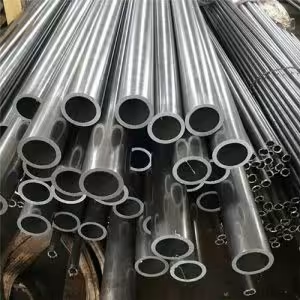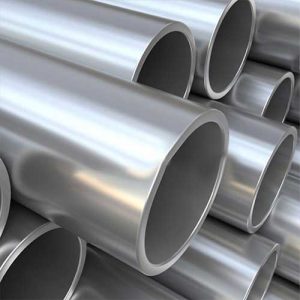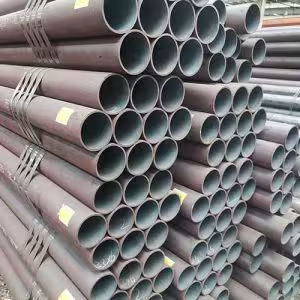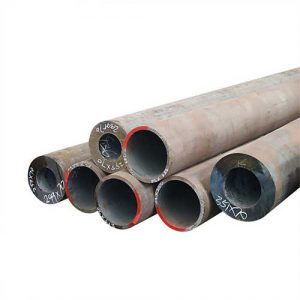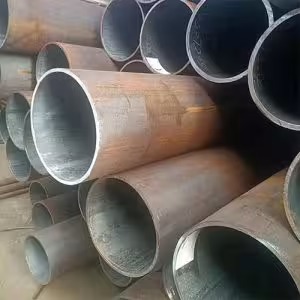Welcome to My Blog!
Before we dive into the content, I’d love for you to join me on my social media platforms where I share more insights, engage with the community, and post updates. Here’s how you can connect with me:
Facebook:https://www.facebook.com/profile.php?id=61565500692293
Now, let’s get started on our journey together. I hope you find the content here insightful, engaging, and valuable.
Table of Contents
Introduction

In the world of construction, manufacturing, and infrastructure, the selection of materials plays a vital role in ensuring the success and longevity of a project. One of the most reliable materials used across various industries is stainless steel, particularly in the form of stainless steel seamless pipes. These pipes offer exceptional properties that make them ideal for high-performance applications, especially in industries such as oil and gas, construction, pharmaceuticals, food processing, and chemical engineering.
Stainless steel seamless pipes stand out due to their strength, corrosion resistance, and ability to withstand high pressures and extreme temperatures. In this blog, we will explore the benefits of using stainless steel seamless pipes, how they compare to other types of pipes, and why they are an excellent choice for numerous projects. We will also take a closer look at their uses, characteristics, and the industries that benefit most from their applications.
What is a Stainless Steel Seamless Pipe?
A stainless steel seamless pipe is made from a solid piece of stainless steel that is hollowed out using specialized processes. Unlike welded pipes, seamless pipes have no joints, which contributes to their strength and durability. They are manufactured by extruding the material into a cylindrical shape, which eliminates any weak points that could occur at a weld. This gives them superior strength and performance, especially in high-pressure environments.
Stainless steel itself is an alloy of iron, chromium, nickel, and other elements. The inclusion of chromium helps in the formation of a protective oxide layer, which provides excellent corrosion resistance. Stainless steel pipes are highly durable and have a long service life, making them an investment worth considering in many projects.
Benefits of Stainless Steel Seamless Pipe


High Strength and Durability
Stainless steel seamless pipes are known for their high strength and durability, making them suitable for demanding applications. The lack of seams means that these pipes can handle higher pressures without risk of failure or leakage, which is especially important in industries like oil and gas. These pipes are able to withstand the internal pressures of liquids and gases without deforming or compromising their structural integrity.
Moreover, stainless steel’s ability to resist corrosion adds to the overall strength and longevity of the pipes. This is essential in environments exposed to harsh chemicals, high temperatures, or corrosive substances.
Corrosion Resistance
One of the standout features of stainless steel is its excellent corrosion resistance. The chromium content in the steel reacts with oxygen to form a thin, invisible layer of oxide on the surface, which prevents rust and corrosion. This property makes stainless steel seamless pipes ideal for use in harsh environments such as marine, chemical, and wastewater applications.
Compared to other materials like carbon steel, which are prone to rust and corrosion, stainless steel seamless pipes offer a much longer service life, reducing the need for frequent replacements and repairs.
Resistance to High Temperatures
Stainless steel seamless pipes are resistant to high temperatures, which makes them an excellent choice for industries that deal with extreme heat, such as the power generation, petrochemical, and automotive industries. These pipes can maintain their strength and integrity in high-temperature environments without becoming brittle or failing.
This heat resistance is a critical factor in ensuring the reliability of equipment in high-temperature processes, such as those used in chemical reactors, heat exchangers, and furnaces.
Versatility and Flexibility

Stainless steel seamless pipes are highly versatile and can be used in a wide range of applications. They are commonly used in industries such as food processing, pharmaceuticals, and water treatment due to their ability to meet stringent hygiene and safety standards. Stainless steel’s non-reactivity with food and its ease of cleaning make it the preferred choice for food-grade piping systems.
Additionally, stainless steel seamless pipes are available in various grades, sizes, and thicknesses, providing flexibility in their application. Whether it is for structural use or fluid transport, stainless steel pipes can be adapted to meet the specific requirements of a project.
Long Service Life and Low Maintenance
The durability of stainless steel seamless pipes contributes to their long service life. Since they are resistant to corrosion and can withstand extreme conditions, they require minimal maintenance over time. This reduces the overall cost of ownership for projects, as there is less need for frequent inspections, repairs, or replacements.
Moreover, stainless steel’s low maintenance requirements contribute to the operational efficiency of systems and reduce downtime, ensuring that projects run smoothly over the long term.
Table: Properties of Stainless Steel Seamless Pipes
| Property | Stainless Steel Seamless Pipe | Carbon Steel Pipe | Welded Steel Pipe |
|---|---|---|---|
| Tensile Strength | High (70,000 – 100,000 psi) | Moderate (50,000 – 60,000 psi) | Moderate (50,000 – 70,000 psi) |
| Corrosion Resistance | Excellent | Poor to moderate | Moderate to low |
| Temperature Resistance | High (up to 1000°F) | Moderate (up to 400°F) | Moderate (up to 600°F) |
| Durability | Very high | Low to moderate | Moderate |
| Maintenance | Low | High | Moderate |
| Flexibility | High (varied sizes and grades) | Low (limited grades) | Moderate |
Applications of Stainless Steel Seamless Pipe
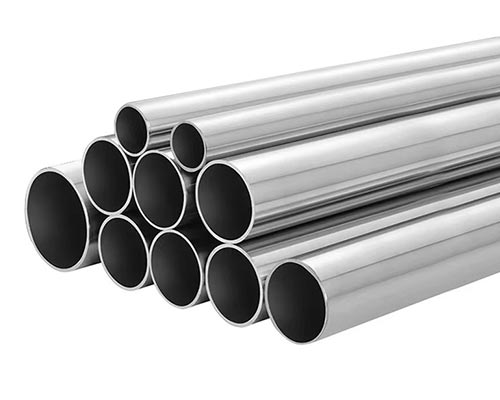
Oil and Gas Industry
The oil and gas industry relies heavily on stainless steel seamless pipes for transporting crude oil, natural gas, and other petroleum products. The high strength and resistance to corrosion make these pipes ideal for use in offshore and onshore oil drilling rigs, pipelines, and refineries. The ability to withstand high pressures and harsh chemicals is crucial for ensuring safe and efficient operations.
Pharmaceutical and Food Processing
In the pharmaceutical and food processing industries, hygiene and safety are paramount. Stainless steel seamless pipes meet the stringent standards set for cleanliness and non-reactivity. They are commonly used in systems for transporting liquids, gases, and powders that must be handled in sterile conditions.
Water Treatment Plants
Stainless steel seamless pipes are widely used in water treatment plants due to their ability to resist corrosion and handle harsh chemicals used in the treatment process. These pipes are also used in systems for distributing clean water and wastewater treatment.
Chemical Industry
The chemical industry requires pipes that can handle highly corrosive substances and high temperatures. Stainless steel seamless pipes are an ideal solution for transferring chemicals, acids, and other hazardous materials. Their ability to resist corrosion and withstand high pressure makes them essential in chemical reactors, storage tanks, and piping systems.
Construction and Structural Uses
In construction, stainless steel seamless pipes are used for structural applications, such as in building frameworks, supports, and reinforcements. The strength and durability of stainless steel ensure the stability and longevity of buildings, bridges, and other infrastructure projects.
Conclusion
Stainless steel seamless pipes offer a combination of strength, corrosion resistance, heat resistance, and durability that make them an invaluable material in various industries. Whether you’re working in construction, oil and gas, food processing, or pharmaceuticals, stainless steel seamless pipes provide reliable performance that reduces maintenance costs and increases the lifespan of your systems.
Choosing stainless steel seamless pipes for your projects ensures high-quality results and long-term reliability. Their resistance to corrosion and high temperatures, along with their versatility and flexibility, make them an excellent choice for a wide range of applications.
FAQ
What makes stainless steel seamless pipes better than welded pipes?
Stainless steel seamless pipes do not have any welds, making them stronger and more durable than welded pipes. They can handle higher pressures and are less prone to failure or leakage. This makes them a better choice for high-pressure applications.
Can stainless steel seamless pipes be used for transporting gases?
Yes, stainless steel seamless pipes are commonly used for transporting gases, including natural gas and industrial gases. Their high strength and resistance to corrosion make them suitable for handling gases at high pressures.
How long do stainless steel seamless pipes last?
Stainless steel seamless pipes have a long service life due to their corrosion resistance and durability. With proper maintenance, they can last for decades, even in harsh environments.
Are stainless steel seamless pipes easy to maintain?
Yes, stainless steel seamless pipes require minimal maintenance. Their resistance to corrosion reduces the need for frequent inspections, repairs, or replacements, making them a cost-effective option over time.
What industries benefit most from using stainless steel seamless pipes?
Industries that require high-strength, corrosion-resistant pipes, such as oil and gas, food processing, pharmaceuticals, water treatment, and chemical manufacturing, benefit greatly from using stainless steel seamless pipes.



